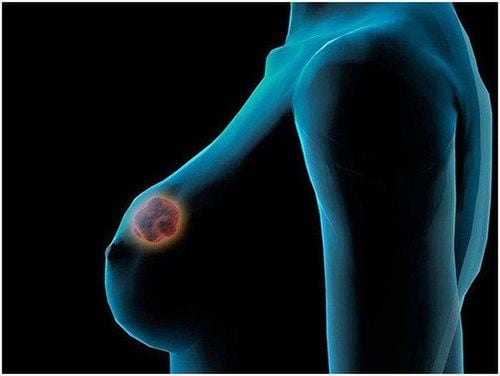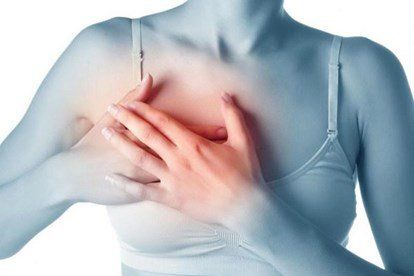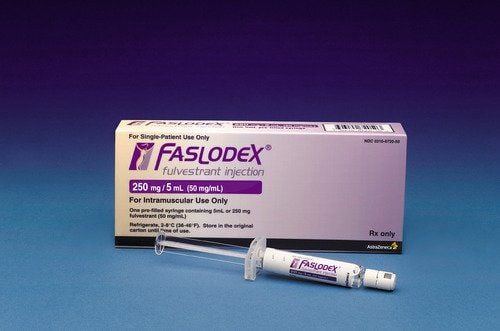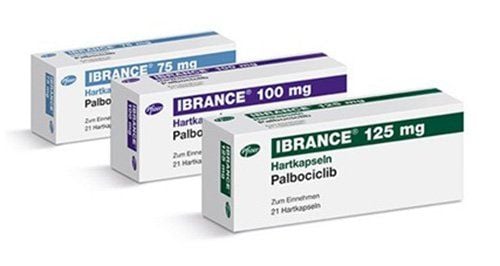This is an automatically translated article.
Breast cancer is the most common fatal malignancy in women. Currently, the trend of developing breast cancer is increasing. Therefore, each individual woman needs to know and be equipped with knowledge about this disease to protect her long-term health. This article will introduce you to the most common types of breast cancer.
1. What is breast cancer?
Breast cancer is the abnormal growth of cells in the breast. These cells grow and develop into a cancerous mass that has the ability to invade other parts of the body. Breast cancer is the most common and common cancer in women. Every year, around 2 million people around the world are diagnosed with breast cancer and about 600,000 people die from the disease. According to GLOBOCAN statistics in 2018, Vietnam has nearly 165,000 new cancer cases, of which breast cancer is 15,000, accounting for 9.2%. Also in 2018, Vietnam recorded more than 6,000 deaths from the disease. This is really a worrying number, because breast cancer is also the most common cancer in women, a concern of many women.
Trắc nghiệm: Những lầm tưởng và sự thật về ung thư vú
Ung thư vú có tỷ lệ tử vong cao nhất ở nữ giới khiến họ rất lo sợ bản thân mắc phải căn bệnh này. Tuy nhiên, không ít chị em có những hiểu biết thái quá về ung thư vú. Thử sức cùng bài trắc nghiệm sau sẽ giúp bạn loại bỏ được những nghi ngờ không đúng về căn bệnh này.
Bài dịch từ: webmd.com
2. Risk factors associated with breast cancer
There is no single and clear cause for breast cancer, however there are several risk factors that can increase the likelihood of developing breast cancer including genetic, lifestyle and environmental factors. schools, including:
Being female increases your risk Having a family history or close relative with breast cancer Aging, 50-year-old women are 10 times more likely to develop breast cancer than women female 30 years old 11 Drinking alcohol Being overweight In 5-10% of cases, breast cancer is hereditary. Cancer is caused by mutations in regulatory genes in the BRCA1 (BReast CAncer gene 1) and BRCA2 (BReast CAncer gene 2) genes. There are several genes other than BRCA1 and BRCA2 that also contribute to an increased risk of breast cancer.
These genes can develop abnormally and can then be passed down through the family, increasing the risk of breast (and ovarian) cancer.

3. Common types of breast cancer
There are different types of breast cancer, some common, while others are rare.
3.1. Invasive ductal carcinoma (IDC)
This is the most common type of breast cancer. Abnormal cancer cells begin to form in the milk ducts and invade beyond the ducts into other parts of the breast tissue. Invasive cancer cells can also invade other parts of the body. IDC is also sometimes called invasive ductal carcinoma. IDC is the most common type of breast cancer, accounting for nearly 70-80% of all breast cancer diagnoses. IDC is also the most common type of breast cancer that can affect men. Invasive ductal carcinoma is often differentiated from its earlier stage, ductal carcinoma in situ (DCIS). DCIS means the cancer is still in the milk ducts and has not invaded any other areas. IDC is cancer that has started to grow in the ducts and is invading surrounding tissues. The classification of the cancer performed by the doctor, and the physical examination and medical history, can help determine the best treatment options.
3.2. Invasive lobular carcinoma (ILC)
Instead of starting in the milk ducts, ILCs originate in the milk glands (called lobules) and invade nearby areas of the breast.
3.3. Inflammatory breast cancer (IBC)
Inflammatory breast cancer is a fast-growing and aggressive breast cancer in which cancer cells invade the skin and lymphatic vessels of the breast. Unlike other types of breast cancer, inflammatory breast cancer usually does not appear as a tumor in the breast. But when the lymphatic vessels become blocked by breast cancer cells, symptoms begin to appear.
Symptoms manifest as an inflammatory reaction, the skin of the breast may be red, inflamed, thickened, or pitted (like an orange), the nipple may become inverted, and the breast may become swollen and hard. , soft and painful or itchy. IBC is a rare and highly advanced type of breast cancer that is already at a distant stage when it is diagnosed. Inflammatory breast cancer is difficult to identify using mammograms.

Diagnosis of inflammatory breast cancer is classified as stage 3 breast cancer and is diagnosed through the physician's clinical judgment and histopathological biopsy results. Usually, IBC develops quickly and requires aggressive treatment. Surgery, radiation, chemotherapy, and hormone therapy may be included. With aggressive treatment, the survival rate of patients with inflammatory breast cancer has improved significantly in recent years.
3.4. Triple Negative Breast Cancer
After the diagnosis of breast cancer, further testing will be conducted to determine the receptor status of the cancer. Cancers will be classified as hormone receptor positive or negative depending on whether they have an estrogen or progesterone receptor protein. Your breast cancer may be classified as ER+ (with estrogen receptor), PR+ (with progesterone receptor), HR+ (with one or both of these receptors), or HR- (without these receptors). ). Cancer can also be classified as HER2 positive or negative. HER2 is a protein that promotes cancer cell growth, and in HER2-positive breast cancer, HER2 levels are higher than normal.
A triple-negative breast cancer diagnosis means that the three most common types of receptors known to drive most breast cancer growth (estrogen, progesterone, and the HER-2/neu gene) are absent. in the cancerous mass. This means that the breast cancer cells have tested negative for epidermal growth factor hormone receptor 2 (HER-2), estrogen receptor (ER), and progesterone receptor (PR). This type of cancer is more common in women under the age of 40 or those with mutations in the BRCA1 gene.
Because tumor cells lack the necessary receptors, conventional treatments such as hormone therapy and drugs that target estrogen, progesterone, and HER-2 are not effective. Using chemotherapy to treat triple negative breast cancer remains an effective option. In fact, triple-negative breast cancer may even respond better to chemotherapy in its earlier stages than many other cancers.
For HR positive and HER2 negative - this is the most common form of breast cancer. An HR (+) HER2 (-) classification means that the cancer has estrogen or progesterone receptors but does not overexpress the HER2 gene. This cancer is usually treated with hormone therapy.
For HER2-positive breast cancer 25% of all breast cancers are HER2-positive, usually in women under 60 years of age. HER2-positive breast cancers often invade more quickly than other types of breast cancer, but respond well to treatments that target the HER2 protein (called targeted therapy).
3.5. Metastatic breast cancer
Metastatic breast cancer is also classified as stage 4 breast cancer. The cancer has spread to other parts of the body. Metastatic organs usually include the lungs, liver, bones, or brain. Cancer metastasis usually occurs through one or more of the following steps:
Cancer cells invade nearby healthy cells. When healthy cells are affected, cancer cells can also reproduce more abnormal cells. Cancer cells enter the circulatory or lymphatic system. Cancer cells move through the walls of nearby lymph vessels or blood vessels. Distant metastasis via circulation. Cancer cells are transported by the lymphatic system and blood stream to other parts of the body. Cancer cells hide in capillaries. Cancer cells stop moving when they are located in a capillary in a distant location, begin to divide and invade surrounding tissue. New tumors develop. Cancer cells form new tumors at new sites.

3.6. Breast cancer in pregnancy
Breast cancer can be diagnosed during pregnancy, although this is rare and the cause of breast cancer is not pregnancy. Women who are diagnosed with breast cancer during pregnancy may experience additional stress due to concerns for the safety of their unborn baby.
If you are pregnant and have been diagnosed, make sure to discuss carefully with oncologists and obstetricians. Doctors will be more careful in setting up a treatment plan to best control breast cancer as well as protect the fetus.
3.7. Other types of breast cancer
Although by far the most common type of breast cancer is ductal carcinoma, there are other less common types, incl.
Medullary carcinoma accounts for 3-5% of all breast cancers. The lump usually shows up on a mammogram, but it doesn't always feel like a lump. Sometimes, it feels like a soft tissue change of breast tissue. Tubal Carcinoma is a small branch of ductal carcinoma (IDC). Accounting for about 2% of all breast cancer diagnoses, tubular carcinoma cells have a distinctive tubular structure when viewed under the microscope. It is often found through a mammogram, as cells may feel more like a soft tissue area of breast tissue than a tumor. Usually, this type of breast cancer is found in women 50 years of age and older and usually responds well to hormone therapy. Mucinous adenocarcinoma accounts for about 1% to 2% of all breast cancers. The main distinguishing features are mucus production and cells that are difficult to identify. This type of cancer also has a good prognosis in most cases. Paget's disease of the breast or nipple. This is a rare type of cancer that affects the skin of the nipple and usually the areola. Cancer takes the form of dark circles of skin around the nipple. Most people with Paget's disease on the nipple also have one or more tumors inside the same breast; usually ductal carcinoma in situ or invasive breast cancer (1–3). Initially, Paget's disease is often misdiagnosed because of skin conditions. Like all breast cancers, the prognosis for Paget's disease depends on many factors, including the presence or absence of invasive cancer and whether it has spread to nearby lymph nodes.

Breast cancer is a common cancer in women. If detected late, treatment will be more difficult than with early detection. Therefore, for subjects at risk, it is necessary to screen for breast cancer early to improve the chances of cure and limit recurrence.
At Vinmec International General Hospital, there is a Breast Cancer Screening Package, which helps customers screen and detect breast cancer early even when there are no symptoms. When registering for the Breast Cancer Screening Package, customers will receive:
Examination and consultation with an oncologist. Breast cancer screening by bilateral breast ultrasound and mammogram. Up to now, Vinmec has become a prestigious address in breast cancer screening with:
A team of highly qualified and experienced doctors. Comprehensive professional cooperation with domestic and international hospitals: Singapore, Japan, USA, .. Comprehensive treatment and care, multi-specialty coordination towards individualizing each patient. Having a full range of specialized facilities for diagnosis and staging before treatment: Endoscopy, CT scan, PET-CT scan, MRI, histopathological diagnosis, gene-cell testing, .. There are a full range of mainstream cancer treatment methods: surgery, radiation therapy, chemotherapy, stem cell transplant...
Please dial HOTLINE for more information or register for an appointment HERE. Download MyVinmec app to make appointments faster and to manage your bookings easily.
Reference source: iconcancercentre.sg













